Explore the wonders of Peru with our Ultimate Travel Guide to the 10 most famous landmarks in Peru. Start in Lima, the lively capital where history blends with modern life. Be amazed by the Nazca Lines, huge drawings carved into the desert. Visit Cusco, the historic city that was once the center of the Inca Empire. Discover the Sacred Valley, full of charming villages and ancient ruins. Hike the famous Inca Trail, leading to the stunning Machu Picchu, the highlight of Incan architecture.
Experience the peaceful beauty of Lake Titicaca, the highest navigable lake in the world, and its floating islands. Stand at the edge of the impressive Colca Canyon, one of the world's deepest canyons. Uncover the mysteries of Kuelap Fortress, an incredible pre-Incan structure. Finally, be captivated by Laguna 69, a beautiful glacial lake high in the Andes. Each of these famous Peru's landmarks offers a unique look into Peru's rich cultural heritage and natural beauty.
The Ultimate 10 Most Famous Landmarks in Peru
Discover Peru's most iconic landmarks with this ultimate travel guide to the top 10 must-see attractions. From the majestic heights of Machu Picchu to the mysterious Nazca Lines, explore the rich history, stunning landscapes, and cultural treasures that make Peru a traveler's dream.
Experience the wonders of the Sacred Valley, the grandeur of Cusco, and the mystical allure of Lake Titicaca. Uncover the secrets of ancient civilizations and feel the spirit of Peru through its most famous landmarks. Perfect for adventurers, history buffs, and culture enthusiasts alike!
Lima
As Peru's capital, Lima is rich in historical sites worth seeing. At the Plaza de Armas, you can find the historical center, surrounded by beautiful architecture and culturally significant buildings like the Government Palace, the Cathedral of Lima, and the Archbishop’s Palace. Nearby, visit the Monastery of San Francisco, which is famous for its catacombs and impressive library.
For a taste of modern Lima, head to Barranco, a colorful, artsy area known for its vibrant street art, local eateries, museums, and cafes. Don’t miss the Bridge of Sighs, a romantic spot with beautiful views, especially at sunset.
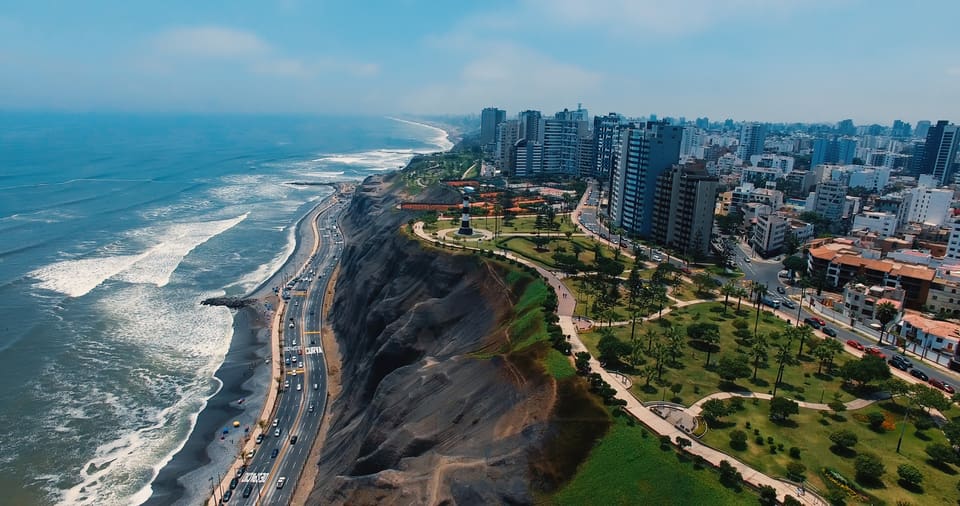
Take your time exploring Barranco and marvel at the stunning murals. When you need a break, indulge in some incredible Peruvian cuisine at one of the many local restaurants. Try traditional dishes like ceviche, lomo saltado, or causa, accompanied by a refreshing pisco sour.
Nazca Lines
The Nazca Lines are fascinating and mysterious geoglyphs created by the Nazca culture around 2,000 years ago. They depict plants, animals, and shapes. Their purpose remains unknown, adding to their intrigue. To get the best view of these marvelous creations, consider taking a guided tour that offers aerial perspectives. These tours provide a bird' s-eye view, allowing you to appreciate the scale and detail of the designs fully.
For those who prefer to stay on the ground, observation towers and platforms along the Pan-American Highway offer good views of some figures. Guided tours often include visits to the Maria Reiche Museum, which is dedicated to the researcher who studied and helped preserve the Nazca Lines.
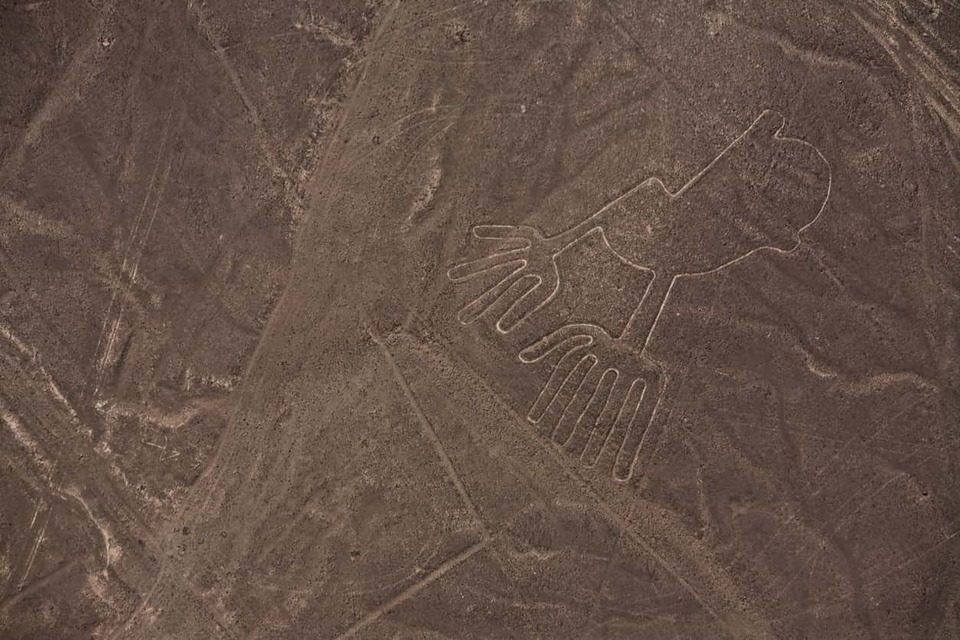
Whether seen from the sky or the ground, the Nazca Lines are a testament to the creativity of the ancient Nazca culture and are a must-see landmark in Peru.
Cusco City
Cusco, the oldest continuously inhabited city in the Americas, is a UNESCO World Heritage Site renowned for its historical significance and archaeological wonders. One of the most important ruins to see in Cusco is Sacsayhuaman. Originally designed to resemble a puma, the city features this fortress as the puma’s head. The zigzag pattern of the fort’s walls mimics the appearance of the puma’s teeth, showcasing the Inca's sophisticated architectural skills.
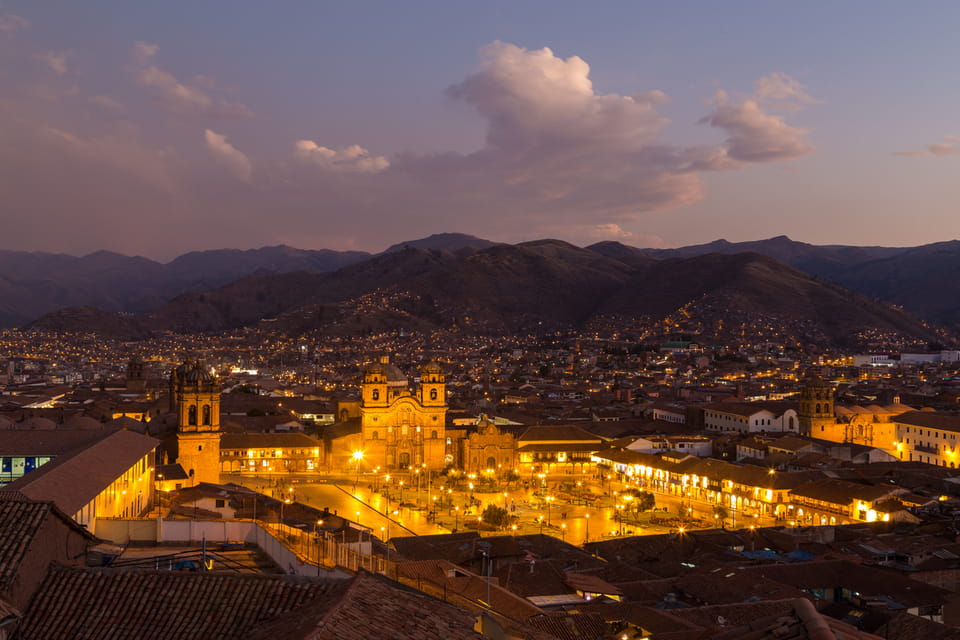
After exploring these fascinating ruins, you can visit the Convent of Santo Domingo, built atop the remains of the Inca site, Coricancha. The original structure was adorned with gold ornaments and golden disks to reflect sunlight, creating a stunning visual effect. Although the conquistadors stripped away all the original gold, the impeccable Inca stonework remains visible throughout Santo Domingo, providing a glimpse into the rich cultural heritage of the Inca civilization.
Sacred Valley
The lush Sacred Valley is a popular place to see Inca ruins and small villages. One unique ruin in Peru is an amphitheater-like area built out of the ground. We still don’t know exactly what it was used for, but it is a fantastic sight to see.
For a more hands-on experience, visit the village of Chinchero. In Chinchero, you can go to weaving cooperatives. Here, you can work with locals on traditional weaving. Many people in the village work as their ancestors did, using old methods and tools. This means you will get an authentic experience and learn a lot about their culture and history.
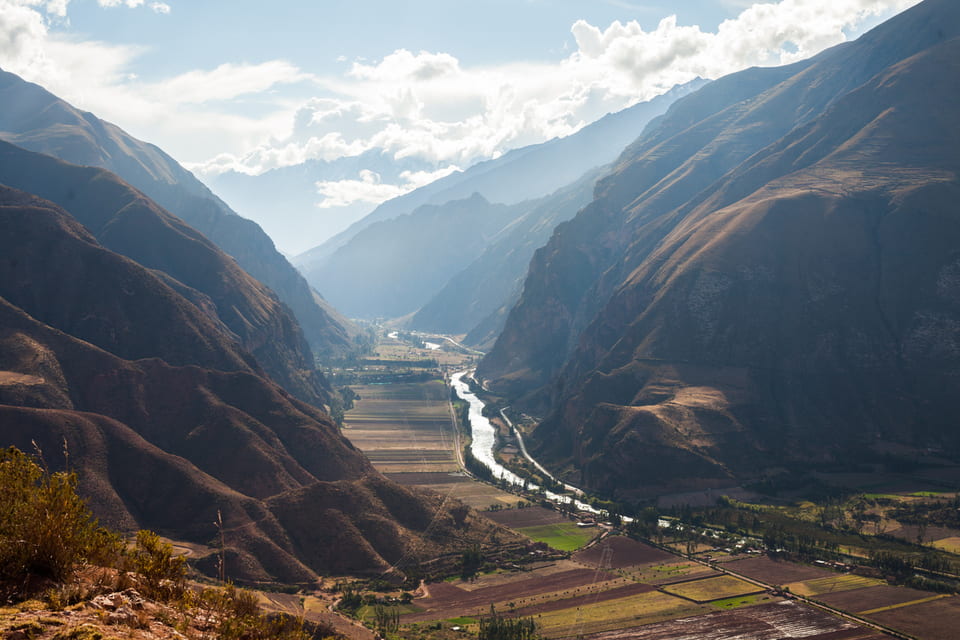
The Sacred Valley is a beautiful place with many things to see and do. Whether you explore ruins or learn to weave, you will have a memorable time.
Inca Trail
If you plan to travel to Machu Picchu, one of the best ways is via the breathtaking Inca Trail. This ancient 26-mile path takes you through stunning mountains and lush forests, offering beautiful and captivating views.
The Inca Trail is more than a hike; it's a journey through history and nature. You'll see high mountain passes, dense cloud forests, and beautiful valleys. Each step brings you closer to the majestic ruins of Machu Picchu, while also letting you enjoy the natural beauty and unique wildlife of the region.
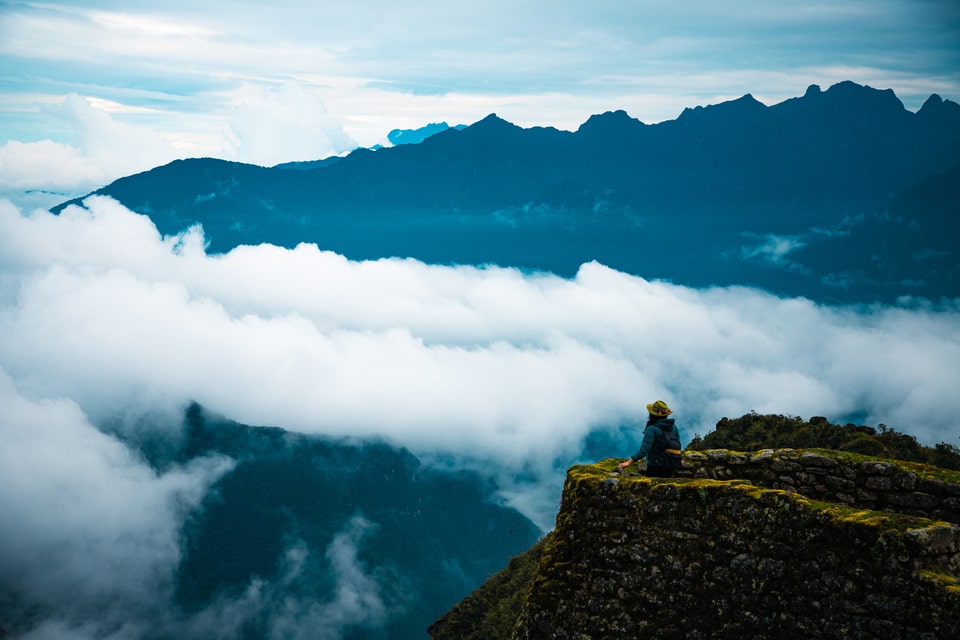
There are several ways to experience the Inca Trail, with routes varying in length and difficulty. However, you cannot walk the Inca Trail alone; a licensed tour guide is mandatory. These guides are knowledgeable about the history, culture, and environment, ensuring a safe and enriching experience. They also help preserve the trail by ensuring visitors follow the rules and respect the natural and archaeological sites.
Whether you are an experienced hiker or just seeking an unforgettable adventure, the Inca Trail offers a unique and rewarding experience. If you are planning a trip to Machu Picchu, consider hiking the Inca Trail to make your journey even more special.
Machu Picchu
Machu Picchu is Peru's most famous landmark and a must-see destination for travelers. This ancient city, built high in the Andes Mountains, is an architectural marvel that showcases the genius of the Inca people. The journey to Machu Picchu offers breathtaking views and a deep sense of history.
The site demonstrates the Inca civilization's remarkable engineering skills. The stone structures are fitted together perfectly without mortar, using a technique called "ashlar." This method made the buildings sturdy and earthquake-resistant. The Incas adapted their construction to the natural landscape, creating agricultural terraces and buildings that blend seamlessly with the mountains.
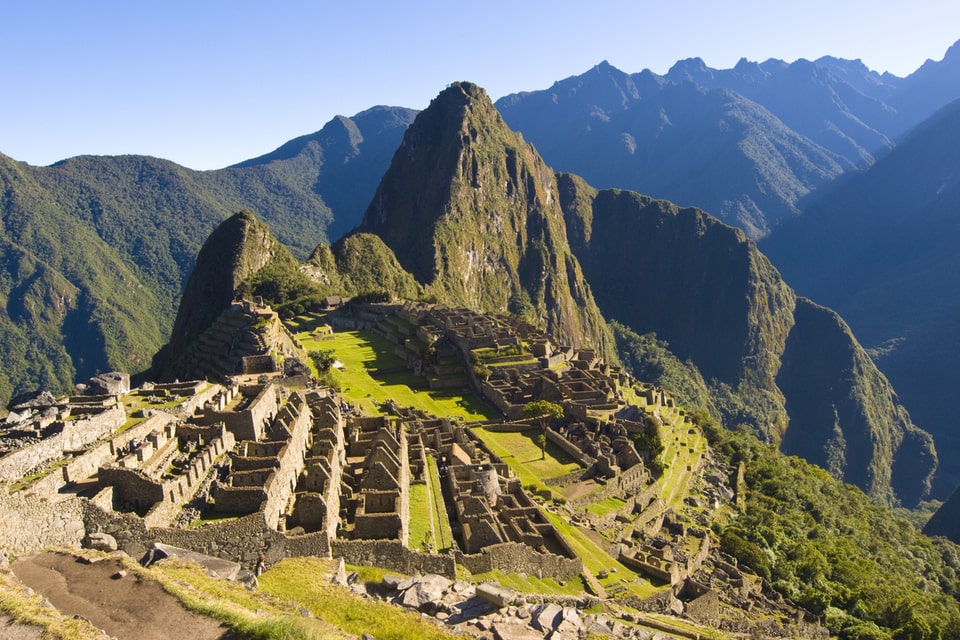
Machu Picchu is rich in history. Built in the 15th century under Inca Emperor Pachacuti, its exact purpose is unknown, though many believe it was a royal estate or a religious retreat. The site remained hidden until American explorer Hiram Bingham rediscovered it in 1911. Today, it is a UNESCO World Heritage site attracting visitors from around the world.
Lake Titicaca
Nestled high in the Andes between Peru and Bolivia, Lake Titicaca is a breathtaking marvel of nature and culture, often called the "Sacred Lake." At over 3,800 meters (12,500 feet) above sea level, it is the world's highest navigable lake, covering 8,372 square kilometers (3,232 square miles). The shimmering blue waters, surrounded by snow-capped peaks and terraced hillsides, create a serene and majestic landscape that captures the beauty of the Andes.
Rich in history and legend, Lake Titicaca is considered the cradle of the Inca civilization. It is believed to be the birthplace of the sun god Inti and the first Inca king, Manco Cápac. The Uros people, who live on floating reed islands and maintain their ancient traditions, enhance Lake Titicaca's mystical charm.
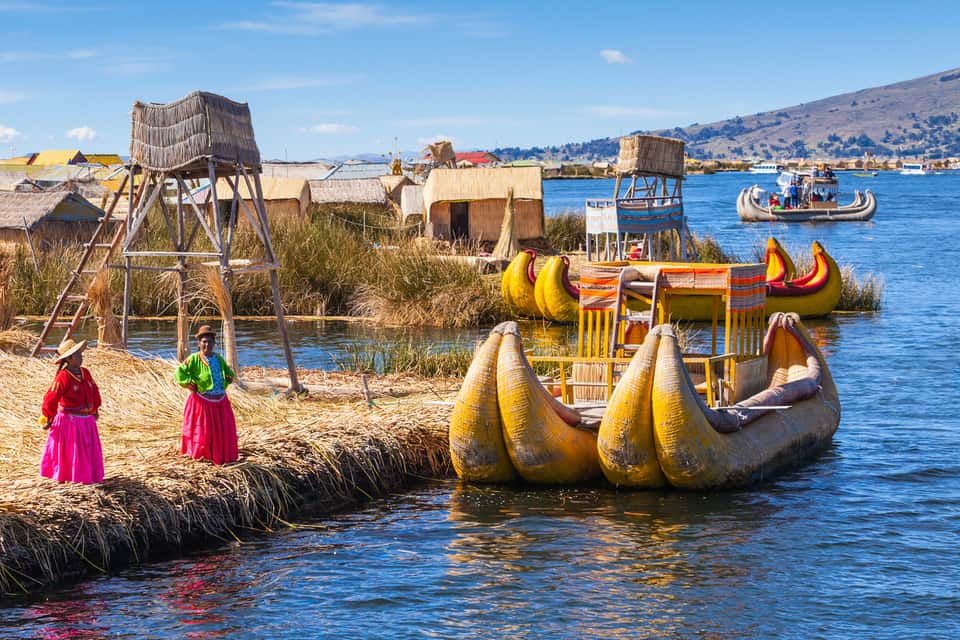
Beyond its scenic views, Lake Titicaca is a haven for biodiversity, home to unique plants and animals, including the giant Titicaca water frog. The lake's deep cultural and spiritual significance, along with its stunning natural beauty, make it more than just a destination. It is a profound journey into the heart of the Andes, where the past and present coexist.
Colca Canyon
Colca Canyon, located in the Peruvian Andes, is a stunning natural wonder that attracts adventurers and nature lovers from around the world. It is twice as deep as the Grand Canyon and stretches over 100 kilometers. The powerful Colca River formed the canyon over thousands of years. The canyon's dramatic cliffs and rugged terrain offer breathtaking views and diverse landscapes, from high-altitude deserts to lush agricultural terraces built by ancient civilizations.
Colca Canyon is a paradise for wildlife enthusiasts. Here, you can see the majestic Andean condor soaring in the sky, an unforgettable sight. The area is also rich in culture, with traditional villages where the Quechua and Aymara communities keep their ancient customs and crafts alive. Visitors can connect with the past and experience the local way of life.
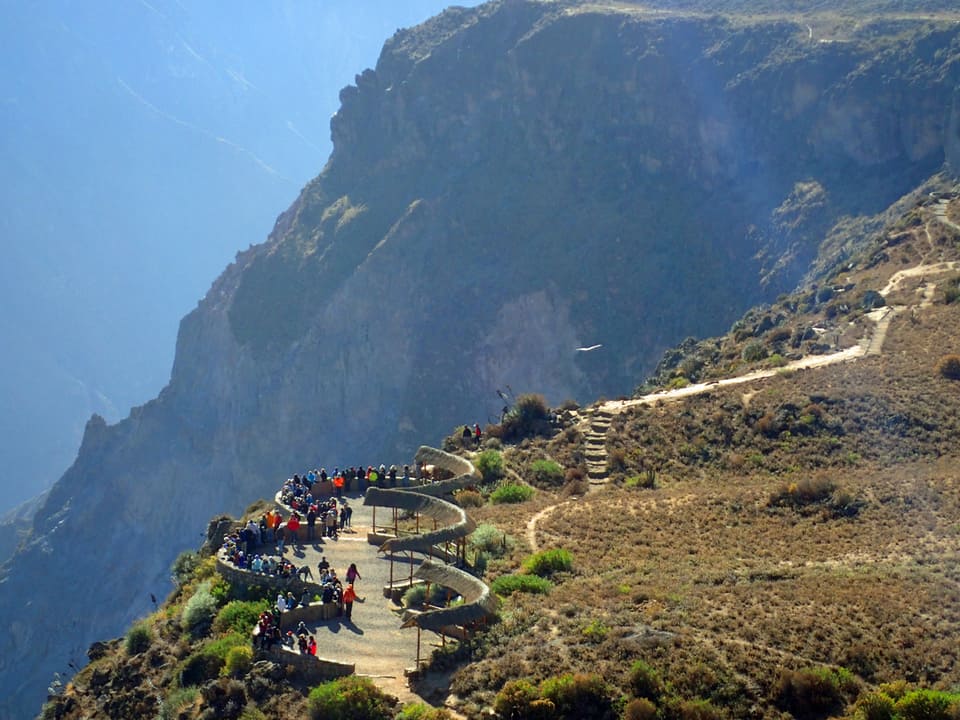
Hiking trails in the canyon lead to natural hot springs, hidden waterfalls, and viewpoints with spectacular panoramic views. Colca Canyon is a place of peace and natural beauty, inviting everyone to explore its wonders and leave with a renewed sense of awe and inspiration.
Kuelap Fortress
Kuelap Fortress is a stunning pre-Incan archaeological site in northern Peru that showcases the brilliance of the Chachapoya civilization. Located high on a cliff, surrounded by lush forests and often shrouded in mist, Kuelap is sometimes called the "Machu Picchu of the North." Built between the 6th and 16th centuries, its massive stone walls, up to 19 meters high, enclose over 400 structures, including temples, homes, and circular dwellings decorated with geometric designs. These ancient constructions highlight the advanced skills of the Chachapoyas.
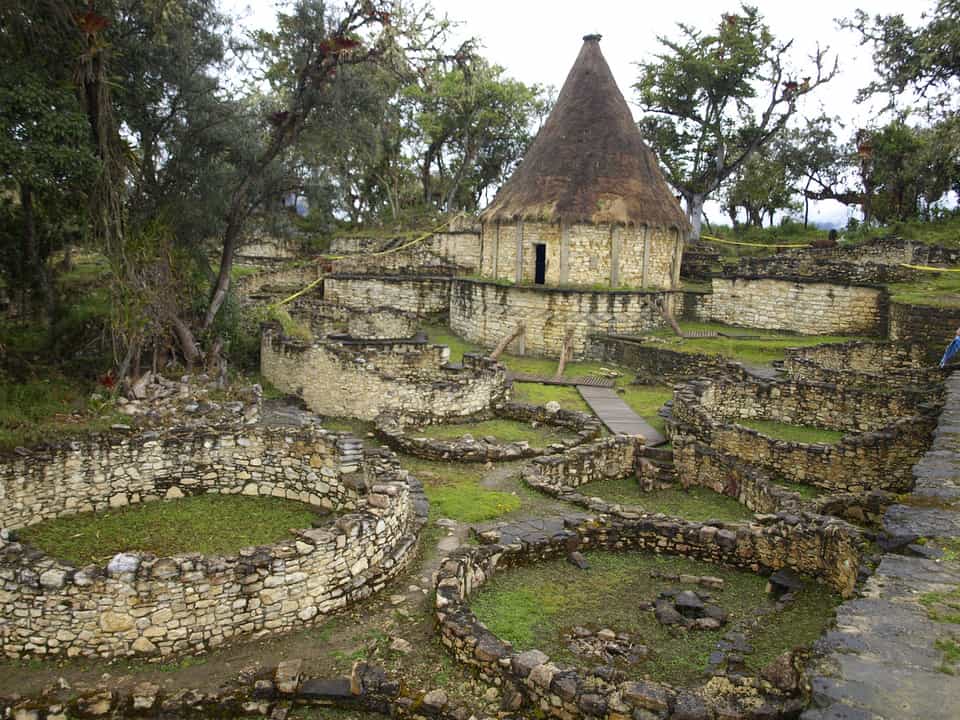
Walking through Kuelap reveals a world where warriors, artisans, and priests once lived. The fortress's breathtaking views of the Andes add to its allure. Kuelap is not just an archaeological site but a glimpse into Peru's rich cultural heritage, offering a unique and enriching experience for those interested in ancient civilizations and history.
Laguna 69
Laguna 69, in Peru's Cordillera Blanca, is a stunning glacial lake known for its bright turquoise waters, green meadows, and majestic mountains. At 4,600 meters (15,091 feet), it attracts visitors from around the world.
The journey starts in Huaraz, with a scenic drive to the hike's starting point at Cebollapampa. The 6-kilometer (3.7-mile) hike takes 3 to 4 hours and goes through meadows, streams, and waterfalls. Higher up, hikers enjoy stunning views, including the towering Chacraraju. The final stretch is steeper, but the turquoise waters of Laguna 69 make it worthwhile.
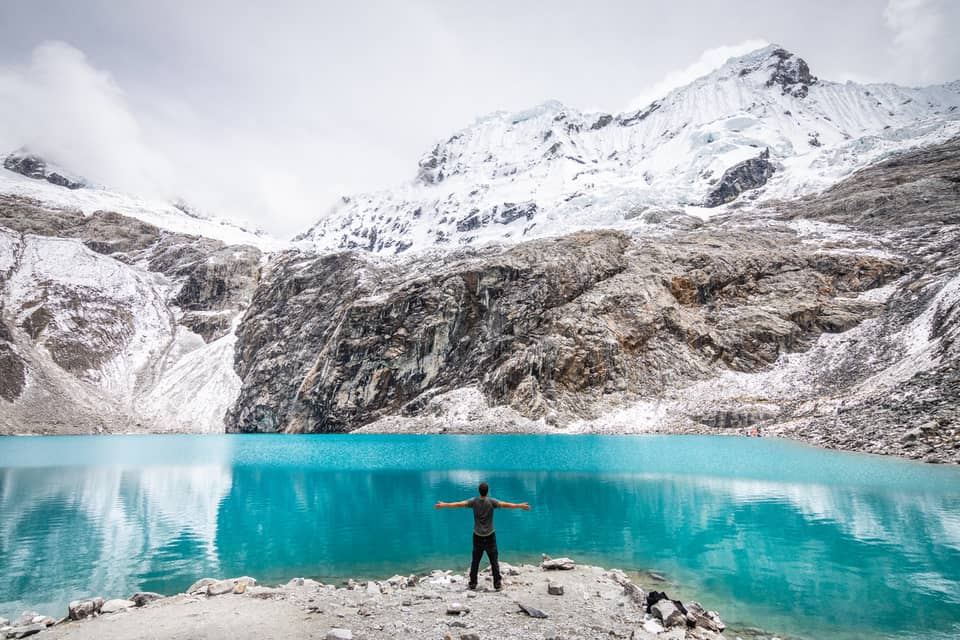
Laguna 69 is perfect for a picnic or relaxation, offering excellent photography opportunities. You can explore Llanganuco Lakes or visit Huascarán National Park nearby.
Whether you are an experienced hiker or a nature lover, Laguna 69 offers an unforgettable adventure. Bring water, snacks, and a camera to capture the breathtaking beauty.
FAQs
What are the must-visit attractions in Lima?
Lima offers many fascinating attractions. You should visit the historic center of Lima, which includes the Plaza de Armas and the Government Palace. The Larco Museum is famous for its extensive collection of pre-Columbian artifacts. Don't miss the Miraflores district, where you can enjoy beautiful coastal views, and visit Parque Kennedy and the Huaca Pucllana archaeological site. Barranco is another great neighborhood known for its vibrant arts scene and bohemian atmosphere. Lastly, the Magic Water Circuit is a fun place to see impressive water fountains and light shows.
What local dishes should I try in Lima?
Lima is famous for its culinary scene. Be sure to try ceviche, a dish made from fresh raw fish marinated in citrus juices and spiced with chili peppers. Lomo saltado is a popular stir-fry dish that combines beef, tomatoes, onions, and fries. Anticuchos, skewers of marinated beef heart, are another must-try. Don't miss causa, a layered potato dish, and a variety of delicious Peruvian seafood. For dessert, try picarones, doughnuts made from squash and sweet potato, served with syrup.
How can I see the Nazca Lines?
The best way to see the Nazca Lines is from the air. Several tour companies offer small plane flights that provide an excellent view of the lines. These flights typically last about 30 minutes and offer a chance to see the various geoglyphs clearly. Alternatively, you can visit the Nazca Lines observation tower, which gives a partial view of some of the lines from the ground. However, the experience is not as comprehensive as the aerial view.
What are the theories behind the creation of the Nazca Lines?
There are several theories about the purpose of the Nazca Lines. Some researchers believe they were created for astronomical purposes, as many lines align with celestial events such as solstices. Others think the lines were used as part of religious or ceremonial rituals to appeal to the gods for water and fertility. Another theory is that they served as pathways for religious processions. Despite extensive study, the exact purpose of the lines remains a mystery.
What are the top things to do in Cusco?
Cusco is rich in history and culture, with many things to do. Visit the Plaza de Armas, the city's main square, surrounded by colonial buildings and churches. Explore the Qorikancha, an important Inca temple dedicated to the sun god. The San Pedro Market is great for local food and crafts. Don't miss the Sacsayhuamán fortress on the outskirts of the city, known for its impressive stone walls. Additionally, take a stroll through the picturesque neighborhood of San Blas, famous for its narrow streets and artisan shops.
How do I acclimate to the high altitude in Cusco?
To acclimate to the high altitude in Cusco, it's important to take it easy for the first few days. Drink plenty of water to stay hydrated and avoid heavy meals. Coca tea, a traditional local remedy, can help alleviate symptoms of altitude sickness. Over-the-counter medications like acetazolamide (Diamox) can also be effective. Avoid strenuous activities initially, and get plenty of rest. If you experience severe symptoms, seek medical attention.
What are the best activities to do in the Sacred Valley?
There are many great activities to do in the Sacred Valley. Exploring the Inca ruins in Pisac and Ollantaytambo is a must. Visiting the Maras salt mines and the Moray terraces offers unique experiences. You can also hike, with trails ranging from easy walks to challenging treks. For adventure seekers, activities like zip-lining, mountain biking, and river rafting are available. Don’t miss out on visiting local markets and trying traditional Peruvian cuisine.
Is it possible to visit the Sacred Valley in a day?
Yes, it is possible to visit the Sacred Valley in a day, but you will only be able to see a few key attractions. A typical day trip might include visiting the ruins and market in Pisac, exploring Ollantaytambo, and stopping at the Maras salt mines and Moray terraces. To fully appreciate the Sacred Valley, consider spending at least two to three days in the area.
How physically demanding is the Inca Trail?
The Inca Trail is considered moderately to very challenging, depending on your fitness level. The trek involves steep ascents and descents, with significant altitude changes. The highest point is Dead Woman's Pass at 4,215 meters (13,828 feet). It's important to be in good physical condition and have some hiking experience. Acclimatizing to the altitude in Cusco for a few days before the trek is recommended. Despite the challenges, the breathtaking scenery and historical sites make the effort worthwhile.
Are there alternative routes to the Inca Trail?
Yes, there are several alternative routes to the Inca Trail. The Salkantay Trek is a popular alternative, offering stunning mountain scenery and diverse ecosystems. The Lares Trek is another option, known for its cultural experiences and visits to traditional Andean villages. The Choquequirao Trek takes you to the remote Inca site of Choquequirao. These alternatives offer different experiences and are less crowded than the classic Inca Trail, but still provide a rewarding journey to Machu Picchu.
How can I get to Machu Picchu?
There are several ways to get to Machu Picchu. The most popular route is by train from Cusco or Ollantaytambo to Aguas Calientes, followed by a bus or hike up to the site. Companies like PeruRail and Inca Rail offer trains. For a more adventurous journey, you can hike the Inca Trail, Salkantay Trek, or other alternative routes that end at Machu Picchu. Another option is to take a bus or taxi to the Hydroelectric Station and then hike along the train tracks to Aguas Calientes.
When is the best time to visit Machu Picchu?
The best time to visit Machu Picchu is during the dry season, from May to September. During these months, the weather is generally clear, making it ideal for exploring the site and taking photos. This is also the peak tourist season, so expect larger crowds. The shoulder months of April and October offer good weather with fewer visitors. The wet season, from November to March, sees more rain, but the site is less crowded, and the surrounding landscapes are lush and green.
What are the top activities around Lake Titicaca?
Lake Titicaca offers many activities. Visit the Uros floating islands, where you can see traditional reed houses and boats. Take a boat tour to Taquile Island, known for its beautiful textiles and stunning views. Explore Amantani Island, where you can stay with local families and experience their way of life. Puno, the main city on the Peruvian side of the lake, has interesting cultural sites and festivals. You can also enjoy kayaking, bird watching, and hiking in the area.
What are the best islands to visit on Lake Titicaca?
The best islands to visit on Lake Titicaca include the Uros floating islands, where you can see traditional reed houses and boats. Taquile Island is known for its beautiful textiles and stunning views. Amantani Island offers a more immersive experience, with opportunities to stay with local families and learn about their culture. Isla del Sol, on the Bolivian side, is another beautiful island with Inca ruins and scenic trails.
How do I get to Colca Canyon?
Most travelers start from Arequipa, the nearest major city to Colca Canyon. From Arequipa, you can take a bus or go on a guided tour. The journey by road takes about 3-4 hours. Buses are available, but a guided tour often provides a more convenient and informative experience. Some tours include stops at viewpoints and local villages along the way. If you prefer more flexibility, you can also hire a private car or taxi.
What are the best viewpoints in Colca Canyon?
The best viewpoints in Colca Canyon include Cruz del Condor, where you can see Andean condors soaring above the canyon. This is one of the most popular and breathtaking spots. Another great viewpoint is Mirador de Antahuilque, offering stunning views of the terraced fields and the Colca River. The village of Cabanaconde also has several viewpoints that provide panoramic views of the canyon. Each viewpoint offers unique perspectives and photo opportunities.
How long does it take to explore Colca Canyon?
The time needed to explore Colca Canyon depends on the depth of your visit. A day trip from Arequipa allows you to see the main viewpoints and enjoy some of the local culture. However, to fully appreciate the canyon, consider spending at least two to three days. This allows time for trekking, visiting local villages, soaking in hot springs, and experiencing more of the canyon's natural beauty. Multi-day trekking tours offer a deeper exploration of the canyon's landscapes and wildlife.
What is the history behind Kuelap Fortress?
Kuelap Fortress is an ancient walled city built by the Chachapoya culture, also known as the "Warriors of the Clouds." It dates back to around the 6th century AD and was continuously occupied until the Spanish conquest. The fortress is located on a mountain ridge in the Amazonian Andes of northern Peru. It served as a defensive stronghold and a ceremonial center. Kuelap's massive stone walls and hundreds of circular stone houses are a testament to the architectural and engineering skills of the Chachapoya people.
How long should I plan to spend at Kuelap Fortress?
Plan to spend at least half a day at Kuelap Fortress to explore the site thoroughly. This allows time to walk around the fortress, visit the various sections, and take in the stunning views. If you are hiking up to the fortress or combining the visit with other nearby attractions, plan for a full day. Guided tours typically last about 6-8 hours, including transportation to and from Chachapoyas.
How do I hike to Laguna 69?
To hike to Laguna 69, you typically start from the town of Huaraz in the Cordillera Blanca region of Peru. From Huaraz, take a bus or taxi to the trailhead at Cebolla Pampa. The hike is about 7 kilometers (4.3 miles) each way and takes approximately 3-4 hours to reach the lagoon, depending on your pace and acclimatization. The trail passes through beautiful mountain landscapes, with stunning views of waterfalls, valleys, and peaks.
What is the difficulty level of the Laguna 69 hike?
The hike to Laguna 69 is considered moderately challenging. The trail involves a steady ascent, with some steep sections, especially near the end. The high altitude, reaching up to 4,600 meters (15,091 feet) at the lagoon, adds to the difficulty. It's important to be well-acclimated and in good physical condition. Take your time, pace yourself, and stay hydrated to manage the altitude and enjoy the hike.
What should I pack for the hike to Laguna 69?
For the hike to Laguna 69, pack essentials such as a good-quality backpack, sturdy hiking boots, and layered clothing to adapt to changing weather conditions. Bring a waterproof jacket, as the weather can be unpredictable. Other important items include a hat, sunglasses, sunscreen, and a reusable water bottle. Pack snacks or a packed lunch, as there are no facilities on the trail. Don't forget a camera to capture the stunning scenery.
When is the best time to visit Laguna 69?
The best time to visit Laguna 69 is during the dry season, from May to September. During these months, the weather is generally clear, and the trails are in good condition. The views of the turquoise lagoon and surrounding peaks are best during this period. The wet season, from October to April, can bring heavy rains, making the hike more difficult and less enjoyable. However, the landscapes are lush and green during this time.
Are there guided hikes available for Laguna 69?
Yes, guided hikes to Laguna 69 are available and can enhance your experience. Guides provide valuable information about the region, the trail, and the natural environment. Guided tours typically include transportation from Huaraz to the trailhead, as well as support along the trail. They can also offer assistance with acclimatization and ensure a safer and more enjoyable hike. You can book guided hikes through local tour operators in Huaraz.
